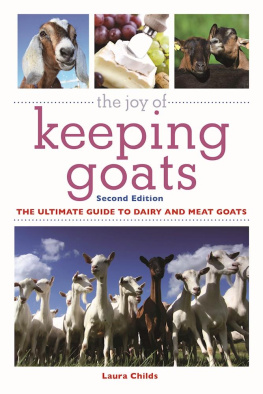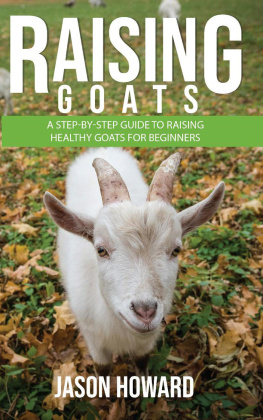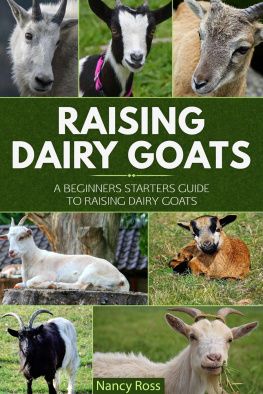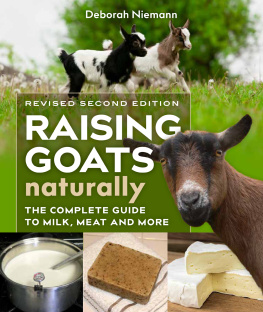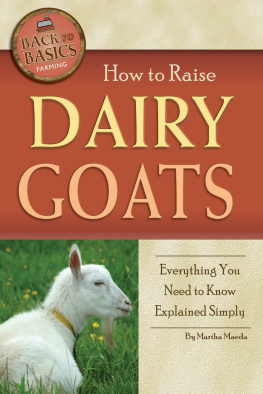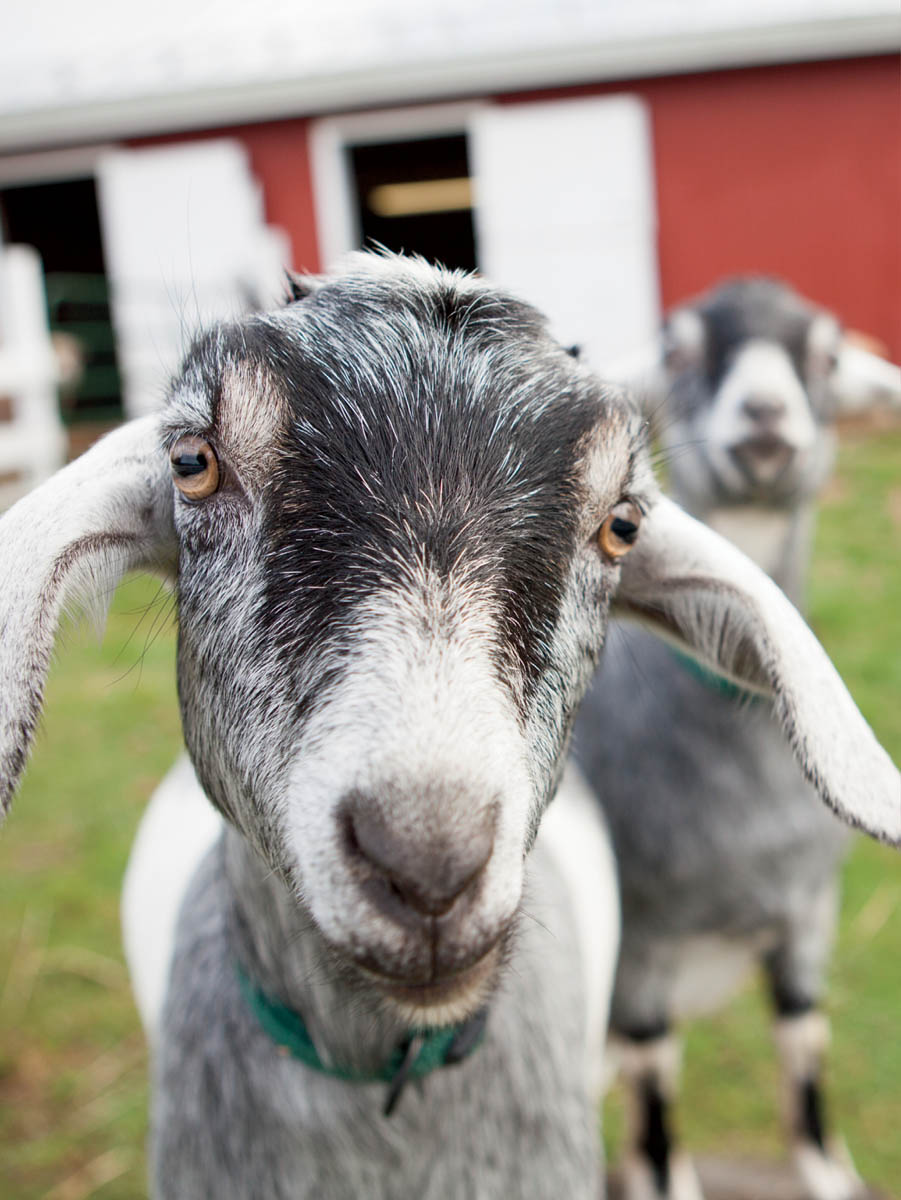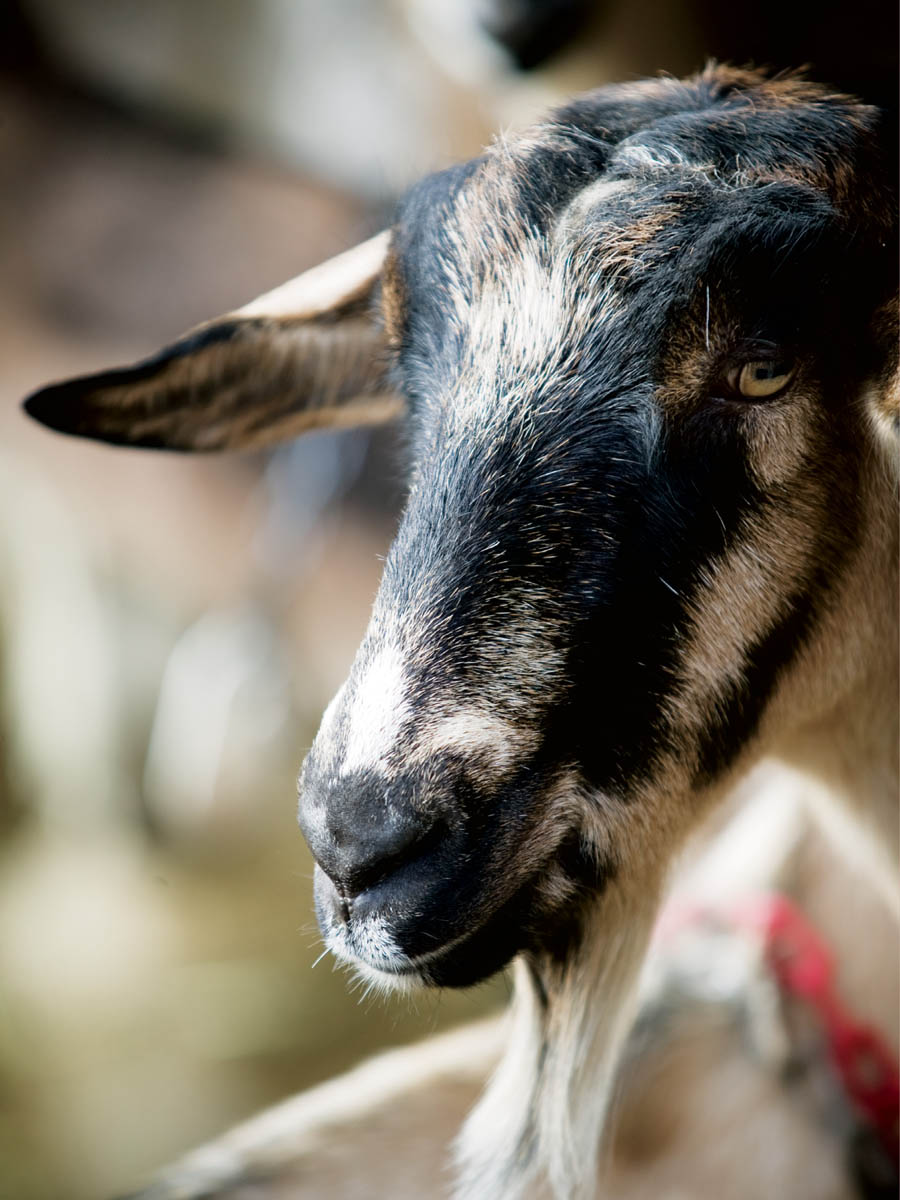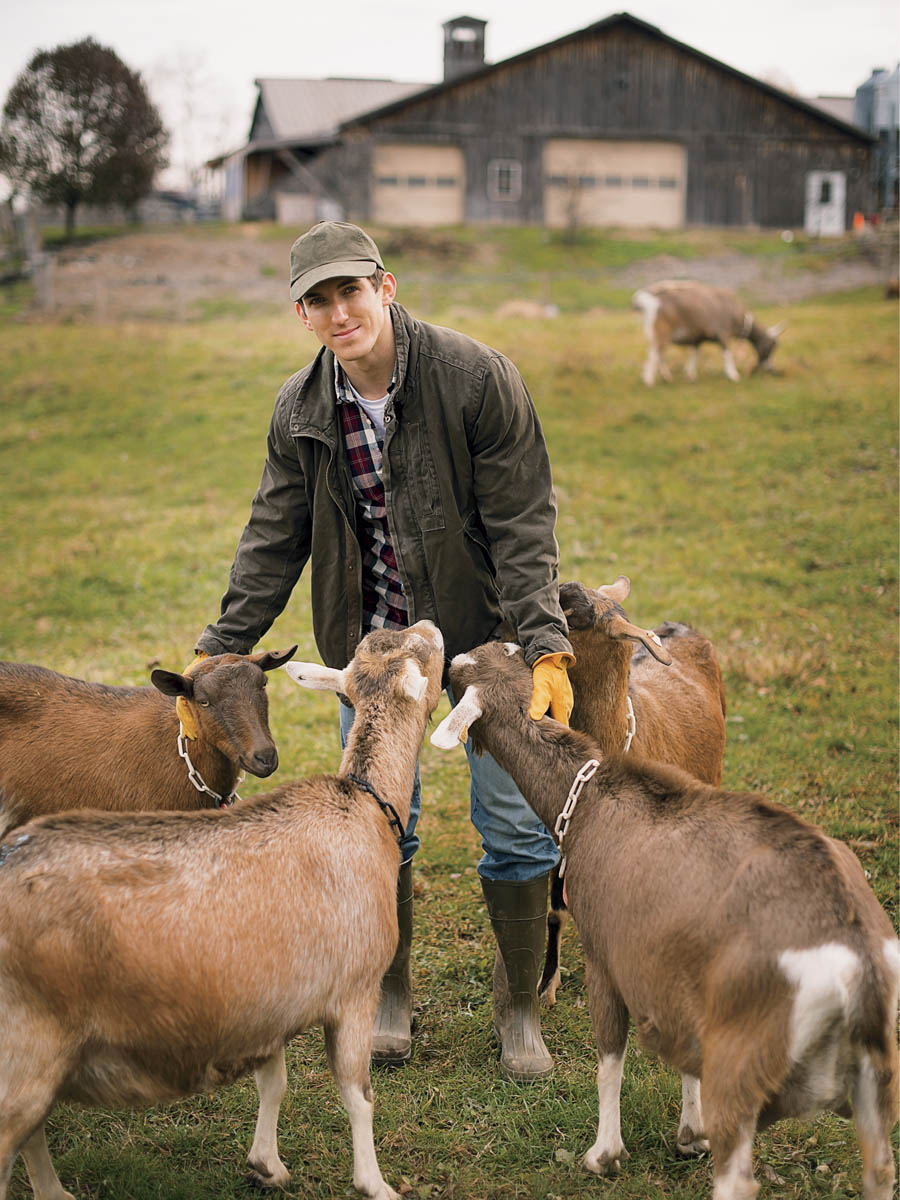
Not only can dairy goats provide milk and meat for a family, but their curiosity and typically gentle demeanor make them great companions as well.
P erhaps your heart has been captured by the antics of baby goats at play, or your self-sufficient spirit has lead you on a course toward finding a family-friendly source of fresh milk, homemade cheese, and maybe some nontraditional meat products. Whatever the inspiration, this book assumes that you are interested in goats but does not assume that you know anything about them. A good place to start the journey is the very beginning, with some basic terms and facts.
Terms to Know
Female goats are called does or sometimes, if theyre less than a year old, doelings. Males are bucks, or bucklings. Young goats are kids. In polite dairy goat company, they are never nannies or billies, although you might hear these terms applied to meat goats. Correct terminology is important to those who are working to improve the image of the dairy goat. People who think of a nanny goat as a stupid and smelly beast that produces small amounts of vile milk will at least have to stop to consider the truth if shes called a doe instead.
Goat Myths and Truths
Over the many centuries and generations that goats have been humankinds companions and useful domesticated stock, myths have been passed along that have their origins in goat behavior and characteristics. As myths tend to be, however, these are exaggerated truths or downright fiction.
The Truth about Goat Aroma
Does are not smelly, they are not mean, and of course they dont eat tin cans. They are dainty, fastidious about where they walk and what they eat, intelligent (smarter than dogs, some scientists tell us), friendly, and a great deal of fun to have around.
Bucks have two major scent glands located between and just to the rear of the horns or horn knobs and minor ones in the neck region. Bucks do smell, but the does think its great, and some goat raisers dont mind it either. The odor is strongest during the breeding season, which usually runs from September to about January. The scent glands can be removed, although some authorities frown on the practice because a descented buck can be less efficient at detecting and stimulating estrus and will still have enough of an odor to be mildly offensive.
Still, even if they dont stink, bucks have habits that make them less than ideal family pets. For instance, they urinate all over their front legs and beards or faces. This is natural, but it tends to turn some people off.
In most cases the home dairy wont even have a buck (see ), so you can keep goats even if you have neighbors or if your barn is fairly close to the house, and no one will be overpowered by goat aroma.
Dont Tie Her Down
Never stake out a goat. There is too much danger of strangulation, and many goats have been injured or killed by dogs. A goat that is tied can neither defend itself adequately nor escape to high ground. Even the family pet you thought was a friend of the goat could turn on it.
Livestock or Pets?
One of the challenges of goat public relations is that everyone seems to have had a goat in the past or knows someone who did. Most of them were pets, and thats where the trouble lies.
A goat is not much bigger than a large dog (average weight for a doe is less than 150 pounds [68 kg]), is no harder to handle, and does make a good pet. But a goat is not a dog. People who treat it like one are asking for trouble, and when they get rid of the poor beast in disgust, they bring trouble down on all goats and all goat lovers. If the goat eats the clothes off the line or nips off the rosebushes or the pine trees, strips the bark off young fruit trees, jumps on cars, butts people, or tries to climb in a lap when it is no longer a cute little kid, its not the goats fault but the owners.
Goats are livestock. Would you let a cow or a pig roam free and then damn the whole species when one got into trouble? Would you condemn all dogs if one is vicious because it was chained, beaten, and teased? Children can have fun playing with goats, but when they teach a young kid to butt people and that kid grows up to be a 200-pound (90 kg) male who still wants to play, theres bound to be trouble. Likewise, a mistreated animal of any species isnt likely to have a docile disposition.
Because goats are livestock, and more specifically dairy animals, they must be treated as such. That means not only proper housing and feed but also strict attention to and regularity of care. If you cant or wont want to milk at 12-hour intervals, even when youre tired or under the weather; if the thought of staying home weekends and vacations depresses you and you cant count on the help of a friend or neighbor, then dont even consider raising goats. The rewards of goat raising are great and varied, but you dont get rewards without working for them.
Goat Housing
Like a cow or a pig, a goat needs a sturdily fenced pen. Each doe requires a minimum of 10 square feet (0.9 sq m) of inside space, plus as much outdoor space as you can manage. Goats do not require pasture, and unless it contains browse, they probably wont utilize much of it anyway; theyll trample more than they eat. Its better to bring their food to them and feed them in a properly constructed manger, especially in a land- and labor-intensive small-farm situation. Managed intensive grazing is catching on, even in relatively small properties. For more on that option, see .
Goats Eat Everything, Dont They?
The goat (Capra hircus) is related to the deer not to dogs, cats, or even cows. It is a browser rather than a grazer, which means it would rather reach up than down for food. The goat also craves variety. Couple all that with its natural curiosity, and nothing is safe from at least a trial taste. Lacking fingers, goats use their lips and tongues to investigate their world like an infant stuck in the oral stage. Anything hanging, like clothes on a wash line, is just too much for a goats natural instincts to resist.
Rosebushes and pine trees are high in vitamin C, and goats love them. Leaves, branches, and the bark of young trees are a natural part of the goats diet in the wild. If you expect them to mind their manners when faced with the chance of a garden smorgasbord, of course youll have problems! But dont blame the goat.
Goats are not lawn mowers. Most of them wont eat lawn grass, unless starved to it, and they wont produce much milk on it.
Goats eat tin cans? Of course not. But theyll eat (or at least taste) the paper and glue on tin cans, which is what probably started the myth. Goats can be raised in a relatively small area. If there are no zoning regulations restricting livestock, dairy goats can be (and are) raised even on average-size lots in town.
A Little History


